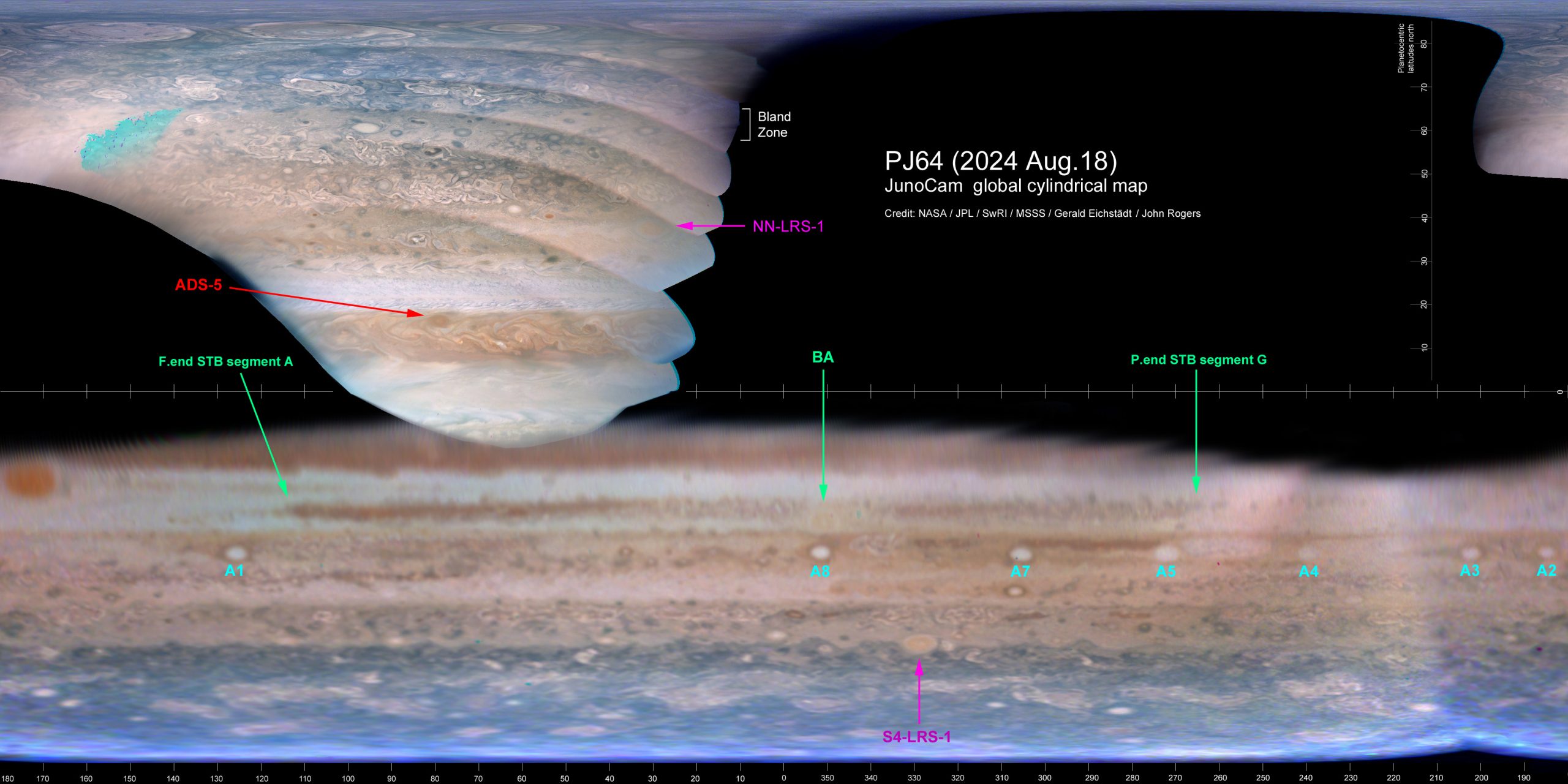JunoCam at PJ64
JunoCam images at PJ64
John Rogers (BAA)
Perijove-64, on 2024 Aug.18, followed the pattern that is now familiar at this stage of Juno’s extended mission. It began with another flyby of Io (Figure 1), but still further away than previous ones (range of 44603 km). Inbound imaging of Jupiter is now restricted to a sector of the northern hemisphere, but at high resolution, leading up to hi-res imaging of the north pole. JunoCam performed very well, despite passing through the most intense part of the radiation belts (Figure 2). The JunoCam team succeeded in maintaining good image quality throughout this flyby, enabling Gerald to produce the maps in Figures 3-6.
Perijove (on the dark side) was at 54.0ºN, and equator crossing was at L3=269. This was only 12º different from the longitude of PJ63, so the same side of Jupiter was mapped again, enabling close comparisons of the atmospheric features over 33 days.
Io
The images show the same region as at PJ60 and PJ62, with lower resolution (e.g. Figure 1). The plumes of Prometheus and Seth were again recorded. The red ring around Nusku was still visible but only weakly; this might be due to genuine fading or to the colour being lost in image noise as the resolution decreases.
Jupiter: North polar region
Juno currently reaches a maximum latitude of 82.5ºN (planetocentric). Figure 3 shows the north polar octagon of circumpolar cyclones (CPCs), surrounding the central cyclone. The view is very similar to PJ63, and there are no substantial changes to the CPCs, nor to the smaller extra cyclone at top left, nor to three associated AWOs.
Figure 4 is a wider map of the north polar region obtained during the final approach. JunoCam routinely takes methane-band images as well as RGB images during this phase, and here we show the methane map as well (after noise removal). These methane images now have good resolution and are free of saturated areas, even down to the NEB (not shown here).
One obvious feature, near the centre of both maps in Figure 4, is a large AWO within the Bland Zone; it is both white and methane-bright. Dynamically it belongs to the N5 domain, but at 60.6ºN it is on the canonical latitude of the N6 prograde jet, which explains why it has prograded by 23º in L3 since PJ23. The original images show short rows of pop-up clouds on it, typical for an AWO.
Jupiter: Global maps
Figure 5 is our global cylindrical map, with long-lived features labelled, and Figure 6 is the map of the south polar region.
__________
This same report, with small copies of the figures, is in this PDF: Report-on-PJ64
The full-size figures are in this ZIP file: PJ64-report_Figures
Figures 4 & 5 are copied below:


| The British Astronomical Association supports amateur astronomers around the UK and the rest of the world. Find out more about the BAA or join us. |
